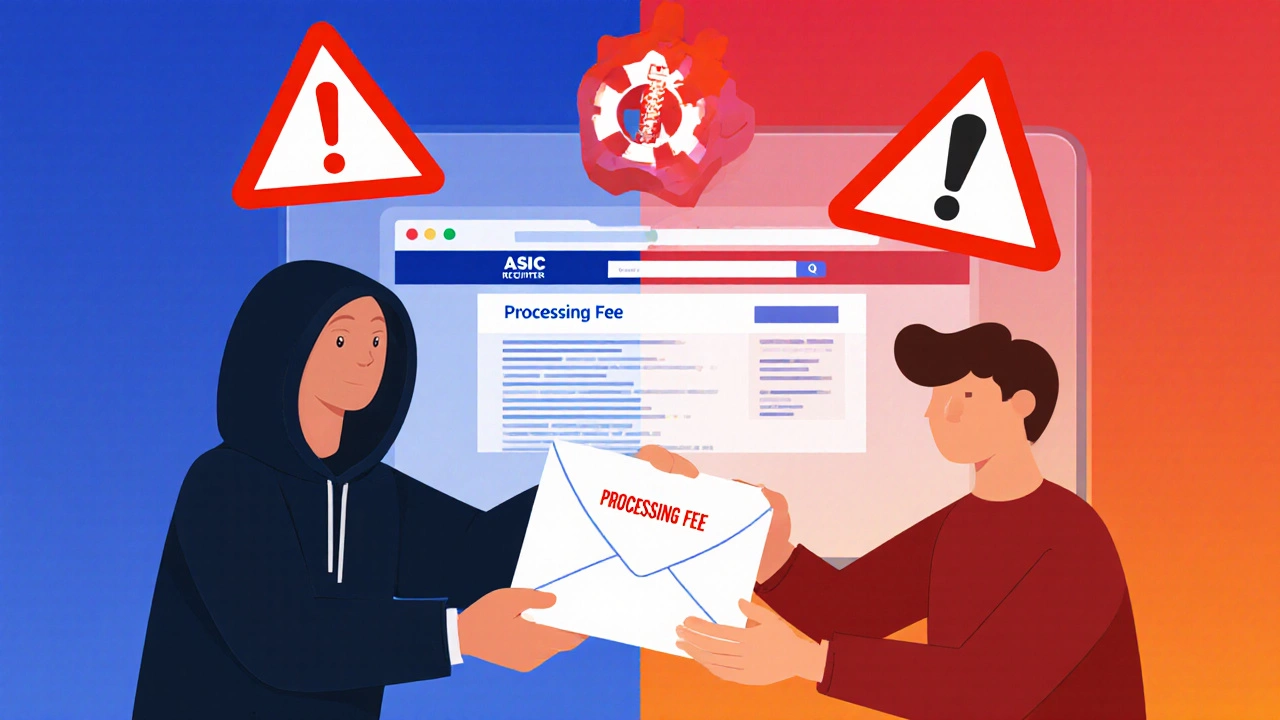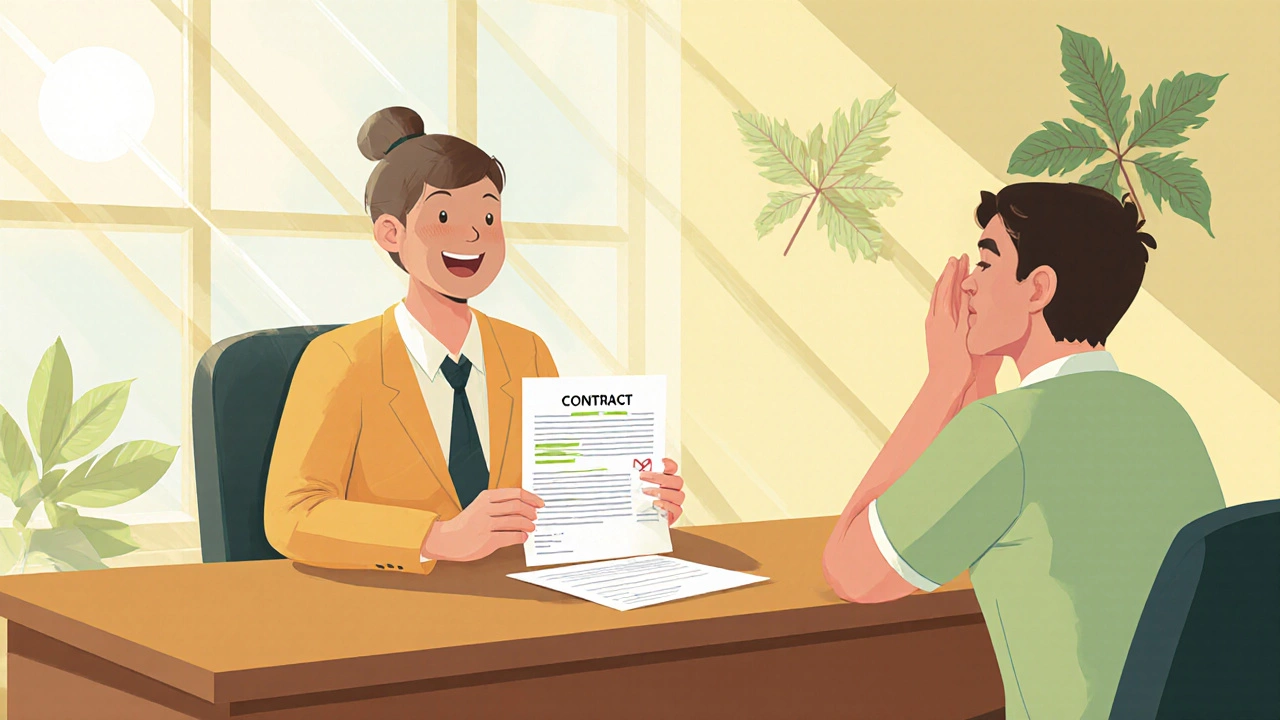When you’re suddenly short on cash because of medical bills, job loss, or unexpected expenses, a hardship loan is often pitched as a quick lifesaver. But before you hand over personal details or sign on the dotted line, you need to know whether these products are trustworthy or just another road to deeper debt.
Key Takeaways
- Hardship loans are real products offered by banks, credit unions, and some specialist lenders in Australia.
- Legitimacy hinges on licensing, transparent fees, and compliance with ASIC regulations.
- Common red flags include upfront fees, vague repayment terms, and pressure‑selling tactics.
- Alternative solutions - such as a low‑interest personal loan, credit union assistance, or financial counselling - often cost less and carry fewer risks.
- Always verify the lender’s ABN, check ASIC’s register, and read the fine print before committing.
What Exactly Is a Hardship Loan?
A hardship loan is a short‑term credit product designed to help borrowers cover an urgent financial shortfall. In Australia, many banks label these as “hardship assistance” or “emergency cash advances.” The loan amount typically ranges from $500 to $5,000, and the repayment period is between 30 and 90 days.
Key attributes include:
- Interest rate: Often higher than a standard personal loan, sometimes quoted as a monthly percentage.
- Loan origination fee: A one‑time charge that can be a flat amount or a percentage of the loan.
- Repayment schedule: Fixed weekly or fortnightly payments, though some lenders allow a lump‑sum payoff.
Because the product targets people in crisis, lenders may relax credit score checks, which is why it attracts both legitimate institutions and illegitimate operators.
How Hardship Loans Operate in Australia
Licensed lenders - such as major banks, credit unions, and accredited non‑bank lenders - must be registered with the Australian Securities and Investments Commission (ASIC). ASIC’s role is to enforce the National Credit Act, which demands clear disclosure of all fees, interest, and repayment terms before a contract is signed.
When you apply, the lender typically asks for:
- Proof of identity (driver’s licence, passport).
- Evidence of the hardship (medical invoice, termination letter, utility bill).
- Bank account details for direct debit.
Most reputable lenders will provide a written contract, an easy‑to‑understand summary of costs, and a cooling‑off period of 14 days - a right protected by law.

Red Flags That Signal a Scam
Unfortunately, the term “hardship loan” is also used by predatory outfits that operate outside the regulatory framework. Look out for these warning signs:
- They demand an upfront payment before any approval (e.g., “processing fee” of $200).
- The interest rate is presented as a flat “service charge” without an APR figure.
- The lender can’t provide a physical address or ABN.
- Pressure tactics: “You must decide now or the offer expires in 5 minutes.”
- Vague or missing repayment schedule - they only say “pay back when you can.”
If any of these appear, walk away and report the number to ASIC’s ScamWatch.
How to Verify a Lender’s Legitimacy
Follow this quick checklist before you sign:
- Search the lender’s name on the ASIC register. Legitimate entities will have an ABN and a licence listed.
- Read the hardship loan contract carefully. All fees, interest rates, and repayment dates should be spelled out.
- Ask for a copy of the interest rate calculation example. Reputable lenders can show you exactly how your balance will grow.
- Check reviews on the Australian Competition & Consumer Commission (ACCC) website or on consumer forums such as ProductReview.com.au.
- Confirm the lender offers a 14‑day cooling‑off period - a legal requirement for most credit contracts.
Safer Alternatives to Hardship Loans
If you’re unsure about a hardship loan, consider these options that usually carry lower costs and stronger consumer protections:
| Feature | Hardship Loan (Bank) | Payday Loan | Personal Loan (Low‑Rate) | Credit Union Assistance |
|---|---|---|---|---|
| Typical Amount | $500-$5,000 | $200-$1,000 | $5,000-$50,000 | $500-$3,000 |
| Interest Rate (APR) | 12%-30% | 200%-600% | 5%-15% | 8%-18% |
| Fees | Origination fee 1%-3% | Upfront fee $100-$200 | None or modest establishment fee | Low admin fee <$50 |
| Regulatory Oversight | ASIC‑licensed | ASIC‑licensed but higher risk | ASIC‑licensed | ASIC‑licensed, member‑owned |
| Repayment Term | 30-90 days | Up to 30 days | 12-84 months | Flexible, often 3-12 months |
Notice how a low‑interest personal loan or a credit union’s hardship assistance typically costs less over time. Even though the application process may take a bit longer, the savings are worth it.

Practical Tips for Borrowing Safely
- Borrow only what you can comfortably repay within the agreed timeframe.
- Set up automatic repayments to avoid missed payments and extra fees.
- Keep a copy of every correspondence - emails, SMS, and signed contracts.
- Consider speaking with a free financial counsellor through the National Debt Helpline before committing.
- If you receive a hard‑sell call, request the lender’s details in writing and verify them later.
When a Hardship Loan Is Probably the Right Choice
There are scenarios where a legitimate hardship loan can be a reasonable bridge:
- You have an unexpected medical bill that won’t be covered by Medicare or private insurance.
- Your salary is delayed, but you have a reliable income source to cover the repayment next month.
- You’ve exhausted other low‑cost options and need a quick cash injection to avoid penalties (e.g., utility disconnection).
In these cases, choose a lender with a strong reputation, clear terms, and a cooling‑off period.
Frequently Asked Questions
Are hardship loans regulated in Australia?
Yes. Any lender offering a hardship loan must hold an Australian credit licence and comply with the National Credit Act, which mandates clear disclosure of fees, interest, and a 14‑day cooling‑off period.
How can I spot a scam hardship loan?
Red flags include upfront payment requests, missing ABN, vague repayment terms, and high‑pressure sales tactics. Always verify the lender on the ASIC register and avoid any loan that asks for money before approval.
What is the typical interest rate for a legitimate hardship loan?
Legitimate hardship loans from banks and credit unions usually range between 12% and 30% APR. Anything significantly higher, especially without a disclosed APR, is likely a payday‐loan style product.
Can I negotiate the terms of a hardship loan?
Yes. Since the loan amounts are small and the borrower’s situation is known, many lenders will waive the origination fee or extend the repayment period if you discuss it before signing.
What should I do if I’ve already taken a predatory hardship loan?
Contact a free financial counsellor right away. They can help you negotiate with the lender, lodge a complaint with ASIC, and explore debt‑relief options such as a repayment plan or a formal hardship variation.
